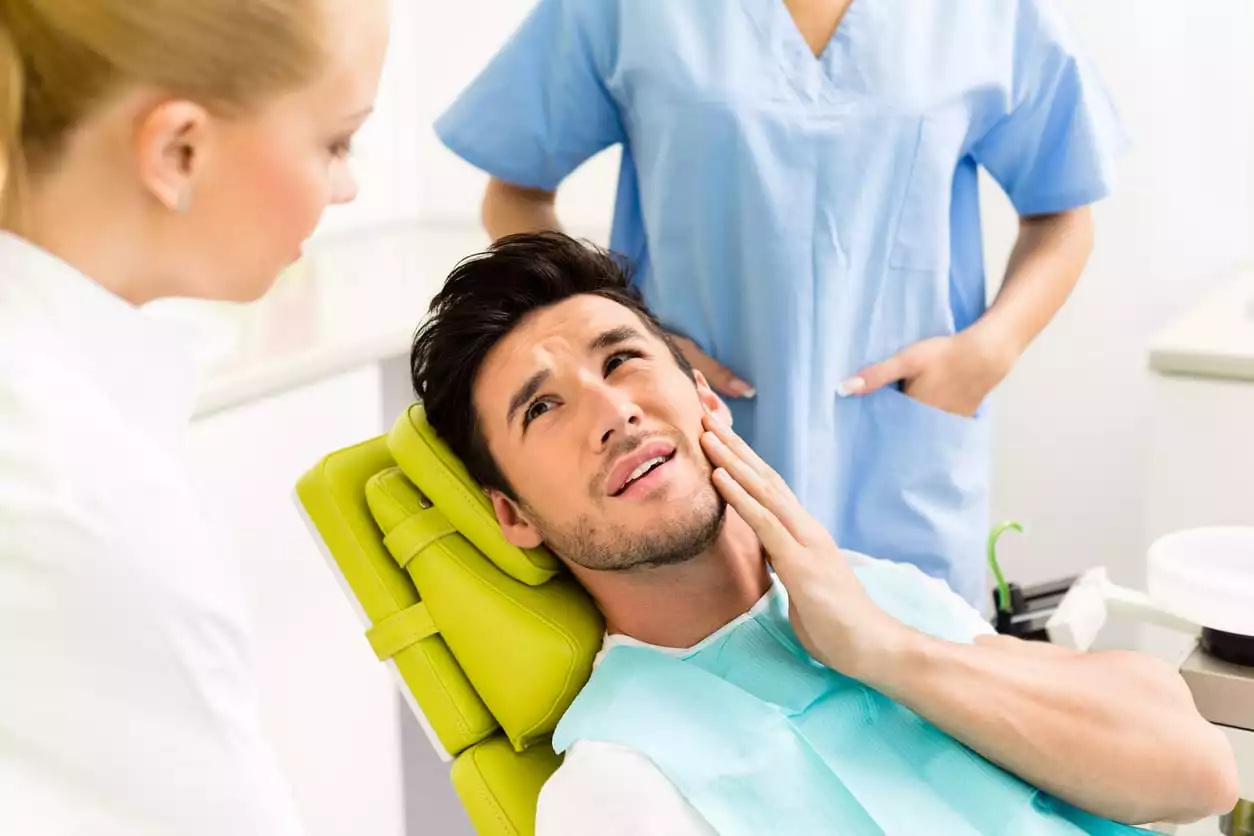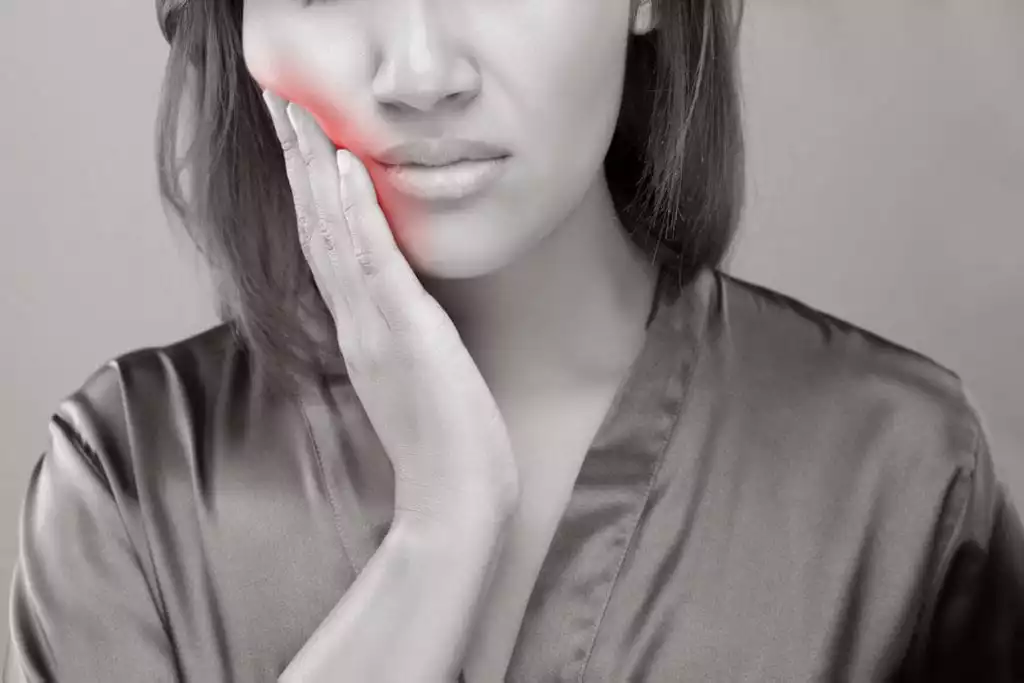
If you are experiencing jaw pain or tenderness, you may have heard the term TMJ. But what is TMJ? Temporomandibular Joint Disorder (TMJD) is a degenerative condition of the jaw. This condition affects the hinge joint at either side of the jaw where the lower and upper jaw connect. Specifically, TMJ impacts the temporal bones of the skull that sit directly in front of each ear.
What Is TMJ?
TMJ affects the jaw joint that causes acute pain in the area. Both patients and doctors frequently refer to TMJD colloquially as “TMJ;” while this is widely recognized, it is technically inaccurate. “TMJ” actually refers to only the joint itself without the addition of the D. Further complicating the issue is the fact that you can experience TMJ issues without necessarily being diagnosed with TMJD. It’s a complicated joint! So since it’s so complicated, what is TMJ and what causes it?
What Causes It?
The most common cause of TMJD is age. As we get older, our joints begin to weaken and the connective tissue or cartilage between them also weakens. In TMJD, this is most often a weakening of the disc between the TMJ hinge. As this disc weakens, it becomes thinner; eventually it begins to degrade. It may bulge out of the joint, pressing on nerves, or it may tear away, removing the cushioning between both jaw bones. Patients who reach this stage of TMJD may require surgical correction as the jaw bones may eventually begin to form a protective fusion, reducing mobility.
Certain medical conditions may also cause or worsen TMJD, including:
- Osteoarthritis and/or Rheumatoid Arthritis
- Connective tissue disorders (Ehlers Danlos; Sjogren’s Disease)
- Dental issues, such as abscesses or misaligned teeth
- Injuries to the jaw, head, skull or neck, including whiplash
- Dislocation (even if partial) of the lower jaw due to injury or surgery
- High stress levels that lead to night bruxism (grinding of the teeth)
- Growths or tumors near the joint (this is extremely rare)
- Repetitive stress injuries from talking, excessive chewing
Now that we know the answers to what is TMJ, and what causes it, we’ll explore ways to treat it. Typically, TMJD is treated with reservation on an as-needed basis using the most minor approach possible. This is because advanced interventions, like cortisone injections or surgery, may do more harm than good if used too often or inappropriately. Fortunately, many of the most entry-level treatments are remarkably effective for a large number of patients.
How Do I Know I Have TMJD?
Patients who experience TMJ disorders may experience popping, crunching, locking, or grinding in the jaw hinge. Many patients also report swelling and pain in the same along the jaw, around the back of the head, down to the neck, and even in the shoulders. Pain in or around the face is also possible, and in severe cases, TMJD seems to trigger condition called Trigeminal Neuralgia (TN).
In some patients, the only manifestation of TMJD is clicking or popping in the jaw. Others have no symptoms at all, but instead experience migraine headaches that seem to pop out of nowhere, never really resolving with standard medications. If you are still asking yourself, “what is TMJ, how do I know I have it?”, speak to your doctor to go over your symptoms.
Treating TMJD
Unfortunately, TMJ pain is also notoriously difficult to treat. Unlike an ankle, a shoulder, or a wrist, you can’t simply stop using your jaw muscles without failing to eat, drink, or even breathe comfortably at night. It also typically responds poorly to painkilling medications, but may sometimes respond more favorably to NSAIDs and muscle relaxers. Doctors attempting to treat TMJD often utilize a multifaceted approach relying on physiotherapy, lifestyle changes, exercises, anti-inflammatories, and sometimes steroids.
Most patients experience at least minimal relief with the application of either moist heat or cold packs. Heat is more effective for spasms and tight muscles, while ice is more effective for piercing or gnawing pain – you can mix it up and use the combination that works best for you.
Because ice and heat can cause burns or frostbite if applied excessively, you should apply either treatment for a maximum of 10 to 15 minutes at a time. Place a cloth between you and your hot or cold pack before application. Then, remove the compress, wait 15 to 30 minutes, and try again.
Massage therapy shows remarkable efficacy (how well it works) for TMJD disorders. A massage therapist can use trigger point massage to release spasming muscles throughout the head, neck, and jaw, relieving tight muscles that may be fighting to stabilize the joint. Often, they can also show you how to massage your own jaw for at-home treatment.
If you’re experiencing a TMJD flare that isn’t responding to these measures, there are a few more steps you can take. Patients who can safely take non-steroidal anti-inflammatory drugs (NSAIDS) can take the recommended dose of Aleve, Motrin, or ibuprofen to reduce swelling and pain. Tylenol (acetaminophen) may also reduce pain, but won’t relieve swelling. Eating soft foods for a day or two may also reduce jaw strain, as can reducing how often you talk.
When It Still Hurts
If your jaw continues to ache or cause problems despite your best intentions, it’s time to see your doctor or dental compounding pharmacist for a referral. He or she can show you how to do simple jaw exercises that loosen and strengthen your jaw muscles at home.
If swelling or mobility issues are extreme, your doctor may recommend cortisone shots. Cortisone is a steroidal anti-inflammatory that does an excellent job of reducing swelling. Most frequently, it is injected into the joint after the joint is frozen, but topical medication is used in certain cases, too.
Physiotherapy may also help to strengthen the joint in early cases, preventing further damage. Generally, jaw surgery is a last resort only used to restore mobility or when pain can no longer be controlled through other means.
So if you’ve been asking yourself “what is TMJ, do I have it?”, look for these common causes and symptoms. Try these at-home treatments, and if the trouble still persists, contact your doctor.

 info@burtsrx.com
info@burtsrx.com

